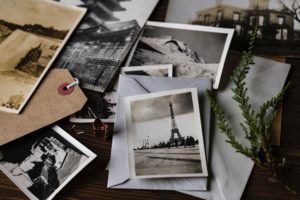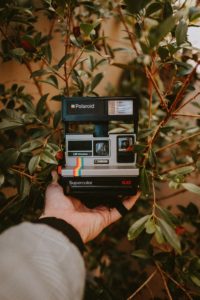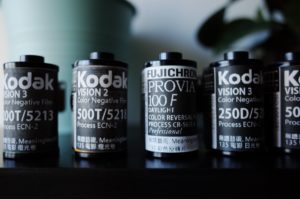Introduction to Film Photography
Before the digital world of smart phones, film photography was the best way to capture candid moments, travels, or gain expertise for the creative art. Having a physical copy of photos rather than just swiping through your phone can be a nice change. There are also a variety of projects you can use your photos for such as collages, framed wall decorations, and scrapbooks! Photos can be very sentimental and can also make great gifts for family and friends. Whether the photos are set up or candid, the memories are sure to last!
 Long Lasting Memories
Long Lasting Memories
Gaining popularity in recent years, film photography is no longer viewed as old-school art and has become quite the trend again. It is all thanks to an Austrian man named Florian Kaps who fought to keep film photography alive. He bought the last Polaroid production plant with the mission to show the importance of film photos – calling this ‘The Impossible Project’. His vision succeeded and many people across the globe see the value of capturing a moment for how it was rather than capturing a staged moment that can be retaken 1000 times on a smartphone. Film also makes the photographer more selective about the photos they take rather than trigger happy, shooting to fill the SD card. With one roll of film taking between 12-36 photos, each photo is taken with a lot of thought to capture the most special, memorable, or artistic moments.
It’s not about capturing the perfect moment; it’s about capturing the memory the way it was
Analog & Instant Film Cameras
There are a few different options when it comes to film cameras. The two types are the traditional analog cameras and the instant film cameras. There are many options for film cameras that are beginner friendly with brands such as Nikon, Canon, and Olympus. The most popular instant film camera is the Fujifilm Instax. The difference between the two is that analog cameras shoot onto a roll of film which then needs to be developed whereas instant film cameras create immediate, self-developing film. If you’re thinking about getting a film camera, go for a point-and-shoot with about 35mm film which is the most common for starters. Great places to find film cameras are on the Facebook Marketplace, Kijiji, or Amazon.
Getting Started
There is quite a lot to learn with film photography which can make things a bit intimidating or overwhelming. The best thing to do is to take it slow and learn step by step. When you purchase your first film camera, you will also need to get a few rolls of film. The most affordable film is made by Kodak Ultramax. You will have the option between colour and black & white, but colour is probably the best option if you are just starting out.
Unlike digital cameras, with a film camera you will need to understand how to set the proper exposure. Once you understand this, you can get creative and shoot the ‘mood’ you want for each specific shot. It can be a bit tricky to get the right light in the beginning. You will need to balance the highlights and shadows without overexposing or underexposing. A light meter helps with balance and can be purchased or downloaded as an app onto your phone. One tip is the ‘Sunny 16’ rule which is a go-to method for settings on a typical day. On a sunny day, you can expect to set your aperture to f/16, ISO 100, and shutter speed at 1/100.
 Learning Process
Learning Process
When you are taking shots on your first roll of film, try to keep a notebook handy and jot down the aperture, shutter speed, and film speed. You can also record stuff like, sunshine, cloudiness, and time of day. This way, when you get your film developed, you can go through each shot and compare to your notes which can help you figure out where you went right or wrong.
Once you capture enough photos to fill your roll of film, you will need to take the film in to be developed. It generally costs under $20 and there are many photo lab processing stores around the city or at shops such as Walmart and Shoppers. You will have the option to develop the film on print paper or to scan them for digital copies.
From beginning to end, film photography is a process, each step takes time, patience, and understanding. Film can be a way of disconnecting from the digital world while traveling or in a social situation rather than having your phone out. Since there are no screens or displays, you must trust your creative eye to capture the moment!
 Long Lasting Memories
Long Lasting Memories 
 Learning Process
Learning Process